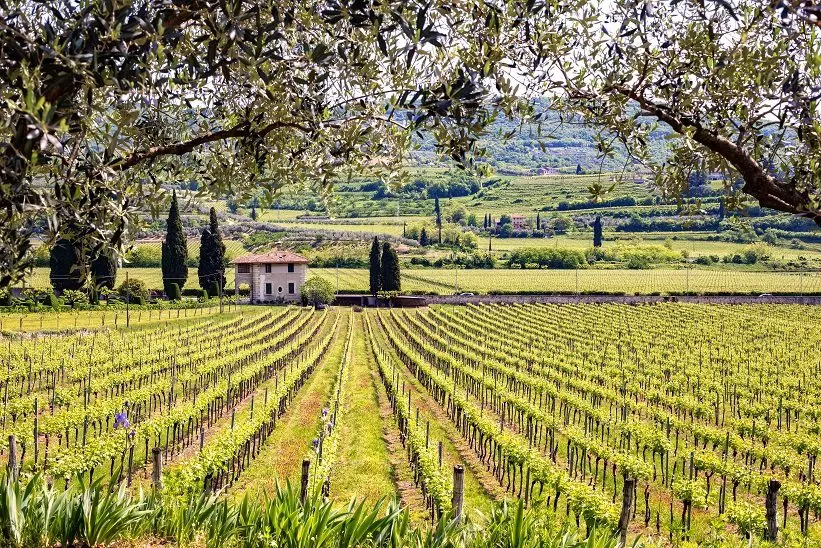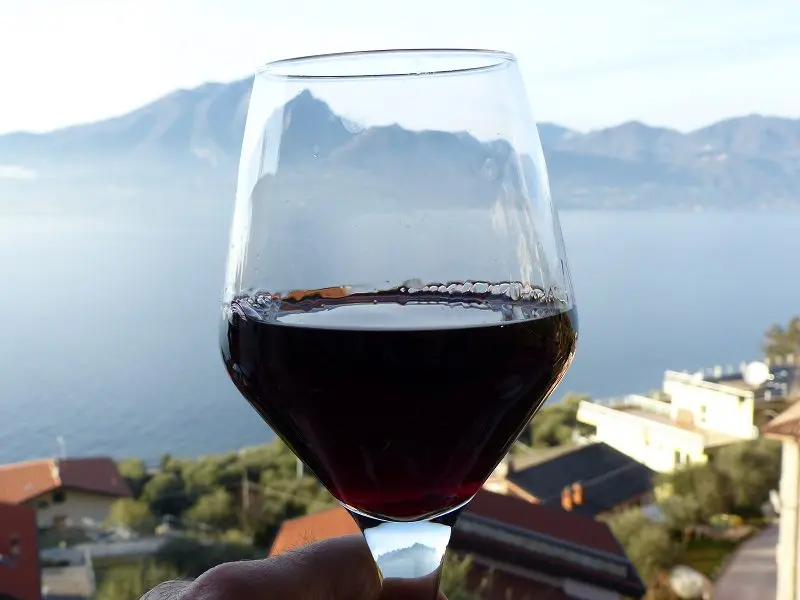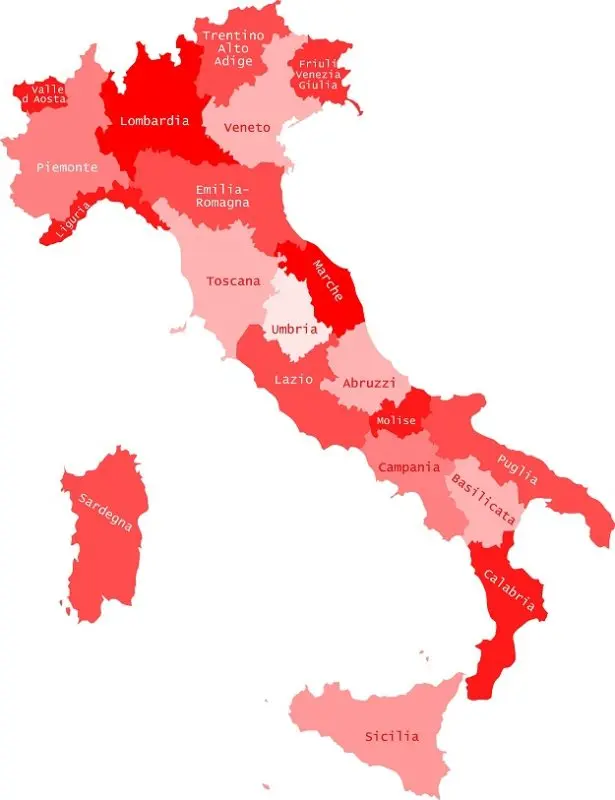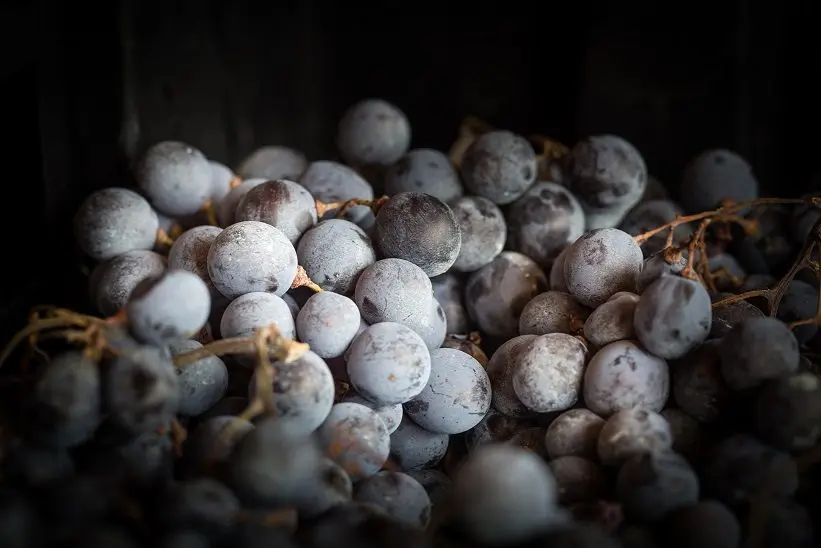Contents
Amarone della Valpolicella, better known simply as Amarone, is an Italian dry red wine made from Corvina, Corvinone, Rondinella and Molinara raisin grapes. The birthplace of wine is the Valpolicella region in the province of Venice, not far from Verona.
“Amarone” comes from the Italian word amaro – “bitter”. This name emphasizes the difference with Recioto, a dessert wine from the same region and the same grape varieties. A bottle of Amarone will cost the customer a minimum of $50.

History
Archaeological studies show that fermented grape juice has been drunk in this region since ancient times, but the first bottles of Amarone appeared on the market in 1939, and since 1959 production began on an industrial scale and on a regular basis. In 1990, the drink acquired DOC status, and in 2009 both Amarone and Recioto became proud owners of the DOCG label. The joint release of both wines in 2008 amounted to eight and a half million bottles.
The name of the region – Valpolicella – is translated from Greek as “valley of many cellars”.
Legend has it that Amarone wine appeared thanks to the winemaker Adelino Lecchese, who in 1936 discovered a barrel of Recioto long forgotten in the cellar. The wine was stored for too long, and all the sugar had time to convert to alcohol. The signor tasted the drink and exclaimed: “Yes, this wine is not bitter – it is the bitterest (amarone)!” This is how the drink got its name.

Production regions
Valpolicella is divided into two main wine regions: Valpolicella Classica and Valpolicella Allargata.
The first includes the sub-regions of Negrar, Marano, Fumane, Sant’Ambrogio and San Pietro in Cariano, the second – Valpantena, Mizzole, Marcellise, Mezzane and Illasi.

Technology of preparation
The grapes for wine Amarone della Valpolicella are harvested late, in the first half of October, so that the berries ripen well. Then the fruits are dried – traditionally they were laid out on straw mattresses under the sun, today special drying chambers are used for this. In the raisin fruit, sugar is concentrated, and the contact of the skin with the pulp is also enhanced, which makes the wine especially tannic and aromatic.
Usually drying lasts 120 days and ends in late January – early February, but the exact timing depends on the specific manufacturer. The grapes are then pressed under pressure and fermented at low temperatures for 30-50 days. Finally, the finished young wine is aged in oak barrels for at least 2, and sometimes 10-20 years.
Amarone is called the “patriarch of the Valpolicella family” – firstly, because of the aging period, and secondly, because berries from the oldest vines are used to produce this wine.
The process of making Amarone is quite complicated and long, at any moment something can go wrong. For example, in a rainy autumn, the risk of developing gray rot is high, then the winemaker has to manually sort out each bunch in order to discard the infected berries.

The difference between Amarone and other wines from Valponicella
Several types of wines are produced in Valponicella, but they are all so closely related that it is sometimes difficult to determine whether this is still Recioto, or already Amarone.
- Valpolicella Classico. After harvesting, the berries are immediately crushed and fermented. The wine is light, very acidic. It is practically not aged and goes well with local dishes.
- Valpolicella Superiore. Aged in oak barrels for at least a year Classico.
- Ripasso. To make this wine, the pomace remaining after Amarone is added to the Classico and the mixture is allowed to ferment well.
- Amarone. Aged wine made from raisined grapes.
- Recioto. It is made in exactly the same way as Amarone, only the fermentation is interrupted earlier, due to which residual sugar is retained in the berries and the wine turns out to be dessert.
Characteristics of Amarone
Amarone wine is characterized by full body, very low acidity, distinct notes of raisins and cherries in the bouquet. The minimum strength is 14%, but the actual value often exceeds this mark.

Despite the fact that the sugar is completely fermented and the drink is dry, the taste remains a “hint of sweetness”. Amarone is considered a winter and “meditative” wine – it warms well and does not even require an appetizer.
If you do not want to drink on an empty stomach, this wine goes well with hearty “heavy” food, for example, a variety of meat dishes or mature cheese.
Price
Sometimes a high price for a product is simply explained by brand recognition or high demand, but in the case of Amarone, wine is objectively more expensive than analogues.
During drying, the berries lose up to 45% of their mass, respectively, the production of Amarone takes almost twice as much grapes as usual. Fermentation takes a long time, and this is also an additional cost for the winemaker, and finally, exposure takes several years.
However, there is a way to save money: buy Valpolicella Ripasso or, as it is also called, Baby Amarone. The taste of the wine is very reminiscent of the “big brother”, but its cost is four times lower.









